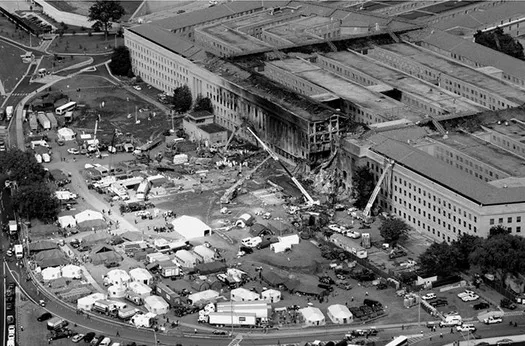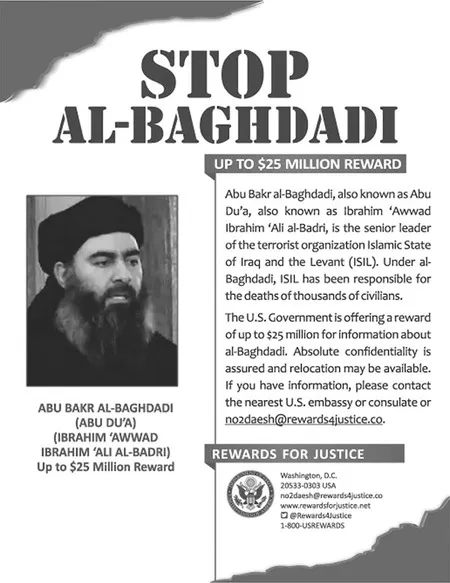Opening Viewpoint
The Ideology of Al-Qa’ida
Prior to his death in May 2011, Osama bin Laden established Al-Qa’ida as an international network which came to symbolize the globalization of terrorism in the 21st century. The network is perceived by many to represent a quintessential model for small groups of like-minded revolutionaries who wish to wage transnational insurgencies against strong adversaries. Although Al-Qa’ida certainly exists as a loose network of relatively independent cells, it has also evolved into an idea—an ideology and a fighting strategy—that has been embraced by sympathetic revolutionaries throughout the world. What is the ideology of Al-Qa’ida? Why did a network of religious revolutionaries evolve into a potent symbol of global resistance against its enemies? Which underlying commonalities appeal to motivated Islamist activists?
Al-Qa’ida leaders such as the late Osama bin Laden and his successor as leader Ayman al-Zawahiri consistently released public pronouncements of their goals, often by delivering audio and video communiqués to international news agencies such as Al Jazeera in Qatar. They also became quite adept at using online Internet outlets and social networking technologies as communications resources. Based on these communiqués, the following principles frame the ideology of Al-Qa’ida:a
- The struggle is a clash of civilizations. Holy war is a religious duty and necessary for the salvation of one’s soul and the defense of the Muslim nation.
- Only two sides exist, and there is no middle ground in this apocalyptic conflict between Islam and the forces of evil. Western and Muslim nations that do not share Al-Qa’ida’s vision of true Islam are enemies.
- Violence in a defensive war on behalf of Islam is the only course of action. There cannot be peace with the West.
- Because this is a just war, many of the theological and legal restrictions on the use of force by Muslims do not apply.
- Because US and Western power is based on their economies, mounting large-scale mass casualty attacks that focus on economic targets is a primary goal.
- Islamic governments that cooperate with the West and do not adopt strict Islamic law are apostasies and must be violently overthrown.
- Israel is an illegitimate nation and must be destroyed.
These principles have become a rallying ideology for Islamist extremists who have few, if any, ties to Al-Qa’ida. Thus, the war on terrorism is not solely a conflict against established organizations but is also a conflict against an entrenched belief system.
Note
a Adapted from Office of the US Department of State, Bureau of Counterterrorism and Countering Violent Extremism (2016) Country Reports on Terrorism 2015. Washington, DC: US Department of State.
Terrorism has been a dark feature of human behavior since the dawn of recorded history. Great leaders have been assassinated, groups and individuals have committed acts of incredible violence, and entire cities and nations have been put to the sword—all in the name of defending a greater good. Terrorism, however defined, has always challenged the stability of societies and the peace of mind of everyday people. In the modern era, the impact of terrorism—that is, its ability to terrorize—is not limited to the specific locales or regions where the terrorists strike. In the age of television, the Internet, satellite communications, and global news coverage, graphic images of terrorist incidents are broadcast instantaneously into the homes of hundreds of millions of people. Terrorist groups understand the power of these images, and they manipulate them to their advantage as much as they can. Terrorist states also fully appreciate the power of instantaneous information, so they try to control the “spin” on reports of their behavior. In many respects, the 21st century is an era of globalized terrorism.
Some acts of political violence are clearly acts of terrorism. Most people would agree that the politically motivated planting of bombs in marketplaces, massacres of enemy civilians, and routine use of torture by governments are terrorist acts. As we begin our study of terrorism, we will encounter many definitional gray areas. Depending on which side of the ideological, racial, religious, or national fence one sits on, political violence can be interpreted either as an act of unmitigated terrorist barbarity or as freedom fighting and national liberation. These gray areas will be explored in the chapters that follow.
September 11, 2001: The Dawn of a New Era
The death of Al-Qa’ida leader Osama bin Laden in May 2011 occurred prior to the 10th commemoration of the September 11, 2001 terrorist attacks in the United States. The attacks were seen by many as a turning point in the history of political violence. In the aftermath of these attacks, journalists, scholars, and national leaders repeatedly described the emergence of a new international terrorist environment. It was argued that within this new environment, terrorists were now quite capable of using—and very willing to use—weapons of mass destruction to inflict unprecedented casualties and destruction on enemy targets. Terrorist movements also became quite adept at using social networking technologies and the Internet to recruit and inspire individuals to carry out mass-casualty attacks against “soft” civilian targets. These attacks seemed to confirm warnings from experts during the 1990s that a New Terrorism,1 using “asymmetrical” methods, would characterize the terrorist environment in the new millennium.2 (Asymmetrical warfare is discussed further in Chapters 9 and 11.)
Photo 1.1 Abu Bakr Al-Baghdadi, founder and leader of ISIS. Wanted poster from the US Department of State Rewards for Justice website.
(Source: US Department of State Rewards for Justice)
Several questions about this new environment have arisen:
- How has the new terrorist environment affected traditional terrorist profiles?
- How has traditional terrorism been affected by the collapse of revolutionary Marxism?
- What is the likely impact of “stateless” international terrorism?
Readers will notice that these questions focus on terrorist groups and movements. However, it is very important to understand that terrorist states were responsible for untold millions of deaths during the 20th century. In addition, genocidal fighting between communal groups claimed the lives of many millions more. Our exploration of terrorism, therefore, requires us to consider every facet of political violence, from low-intensity campaigns by terrorist gangs to high-intensity campaigns by terrorist governments and genocidal paramilitaries.
This chapter is a general introduction to the subject of terrorism. It is an overview—a first glance—of basic concepts that will be developed in later discussions. The following themes are introduced here and will be explored in much greater detail in subsequent chapters:
- First Considerations
- Conceptual Considerations: Understanding Political Violence
- Terrorism and Criminal Skill: Three Cases From the Modern Era
First Considerations
At the outset, readers must develop a basic understanding of several issues underlying the study of terrorism. These issues are ongoing topics of research and debate among scholars, government officials, the media, and social activists, and all of them will be explored in detail in later chapters. The discussion here introduces the following:
- An Overview of Extremism and Terrorism
- Terrorism at First Glance
- Sources of Extremism and Terrorism
An Overview of Extremism and Terrorism
Extremism is a quality that is “radical in opinion, especially in political matters; ultra; advanced.”3 It is characterized by intolerance toward opposing interests and divergent opinions, and it is the primary catalyst and motivation for terrorist behavior. Extremists who cross the line to become terrorists always develop noble arguments to rationalize and justify acts of violence directed against enemy nations, people, religions, or other interests.
Extremism is a radical expression of one’s political values. Both the content of one’s beliefs and the style in which one expresses those beliefs are basic elements for defining extremism. Laird Wilcox summed up this quality as follows:
Extremism is more an issue of style than of content … Most people can hold radical or unorthodox views and still entertain them in a more or less reasonable, rational, and nondogmatic manner. On the other hand, I have met people whose views are fairly close to the political mainstream but were presented in a shrill, uncompromi...



